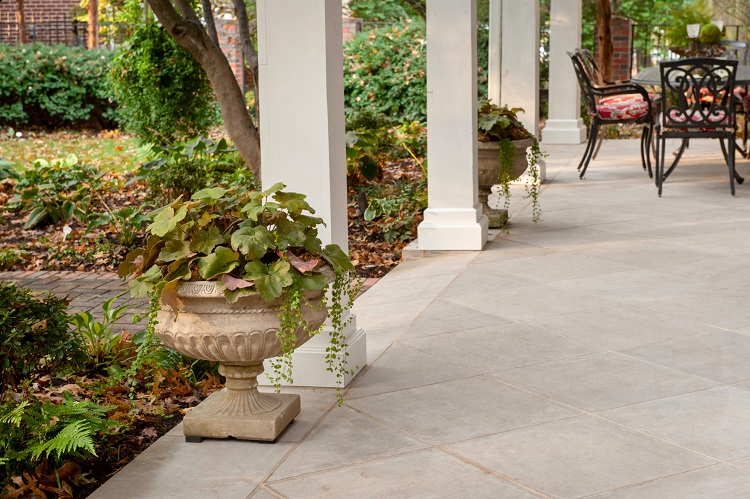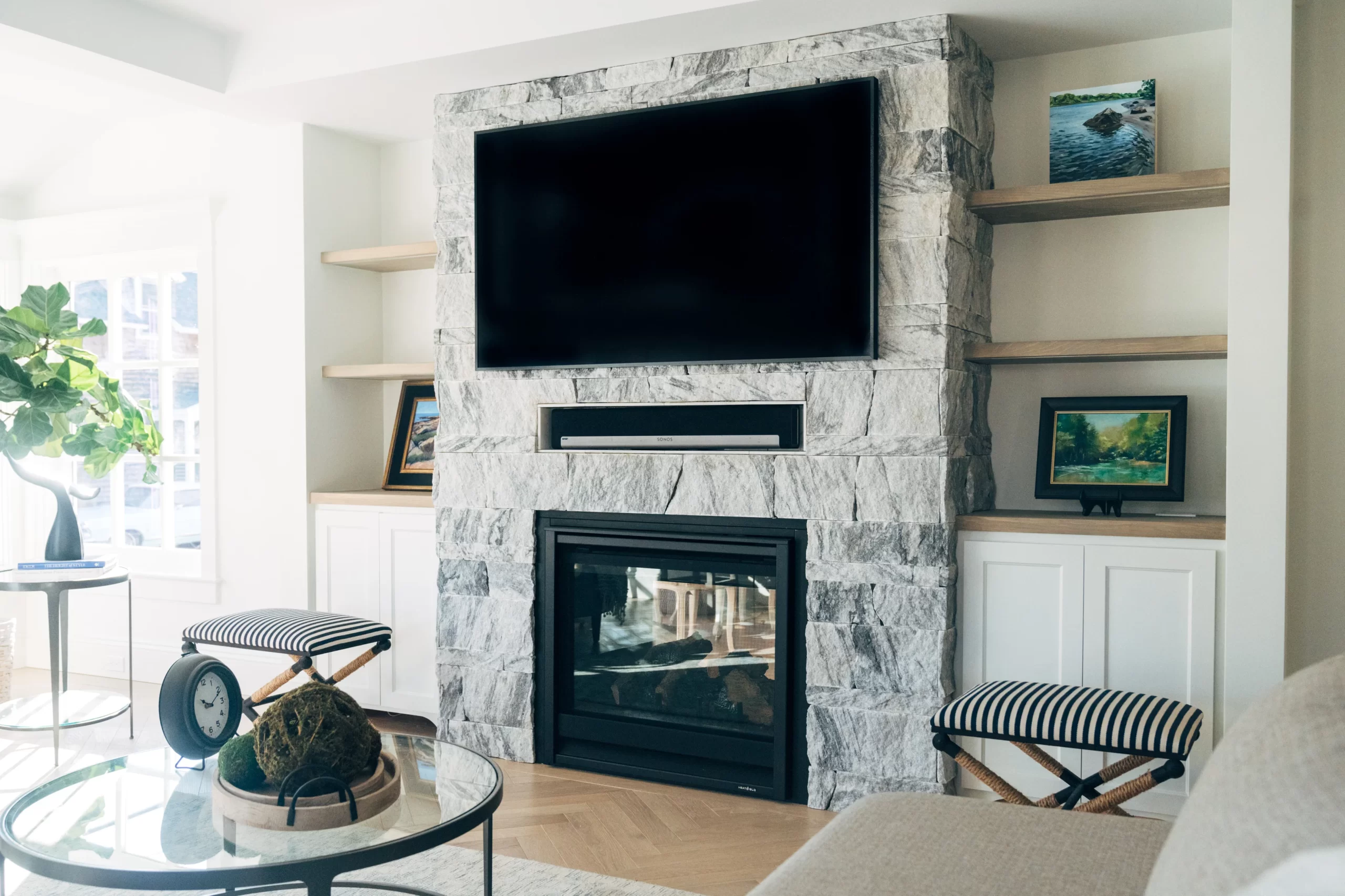Natural Stone 101: How to Incorporate Limestone and Granite Into Your Hardscape
Overlooking natural stone in favor of more run-of-the-mill concrete materials when designing your hardscape project is like choosing cold cereal at an all-you-can-eat breakfast buffet. Why choose Tony the Tiger when Eggs Benedict are there for the taking (not to mention bacon and croissants)?
One of the problems, according to Nathan “Hardscape Nate” Fuelleman, is that contractors just don’t know enough about natural stone — and Indiana limestone and American granite in particular — or how best to incorporate them into landscape projects.
To help, we’ve put together the 4-1-1 on granite and limestone and how to include them in your design palette and stand out from the competition.
All About Indiana Limestone
Thanks to the way it’s been formed over millions of years, Indian limestone — which can be found in just two counties in the Hoosier state — gets sawed out of the ground at the quarry and results in a tight, consistent grain.
“You’re able to manipulate it much easier and the grain size makes for more consistent products time and time again,” says Hardscape Nate. Unlike some dolomitic limestones, which form in layers that need to be broken out of the ground, there are no variations in Indiana — or oolitic — limestone.
“You’re not limited by how thick that layer is,” Nate adds.
Because Indiana limestone has a gradient of natural earth tones from its aging, it will accommodate any other material it’s matched with. “It’s the white shirt of natural stones,” he jokes. “You can put it with anything.”
The tightness and consistency of grain, tied to earth tone colors that range from medium grey to a light buff, gives you the ability to hit those nice muted tones, he adds.
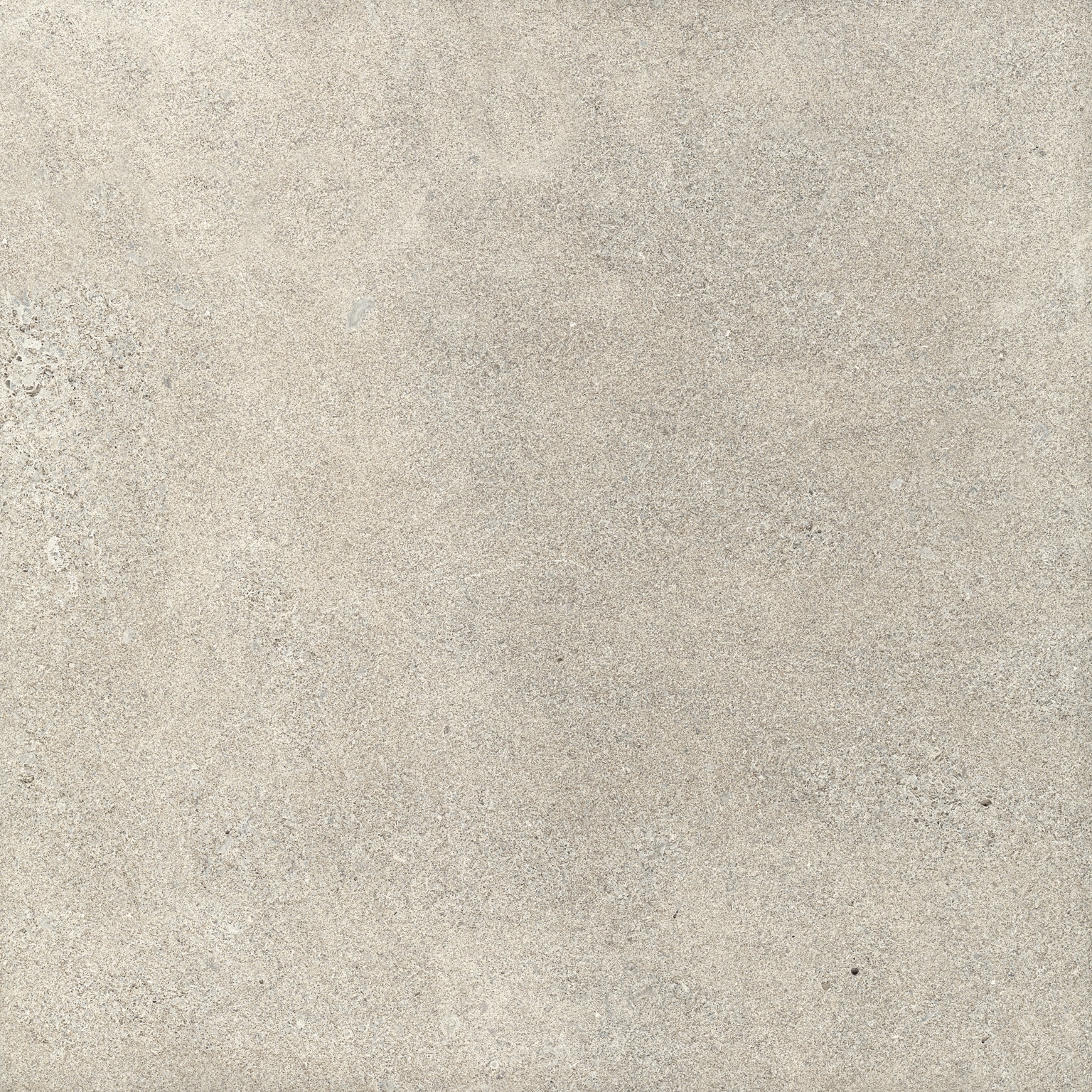
INDIANA LIMESTONE – FULL COLOR BLEND ™
QUARRIED IN BLOOMINGTON, IN
INDIANA LIMESTONE – Full Color Blend ™ is a natural, full range compilation of warm buff colors and medium gray tones are present within this historic limestone. Subtle veining meanders throughout the surface creating a unique movement in this medium grained, standard grade stone.
GET A SAMPLE
FREE TO THE TRADE
Drilling Down On Granite
The hardest of stones, granite is “the strong dude on campus”. Its density and very tight grains makes it the perfect material for a variety of hardscape projects, which is only limited by its weight. “It’s really that go-to stone for high end projects,” says Hardscape Nate.
Granite’s wide-ranging palette is what really separates it from other materials, as you can use the same stone for a project and get all different shading. “You can go from great accenting in dark, rich tones — the black and deep burgundies — all the way through to the softer and lighter, elegant whites.”
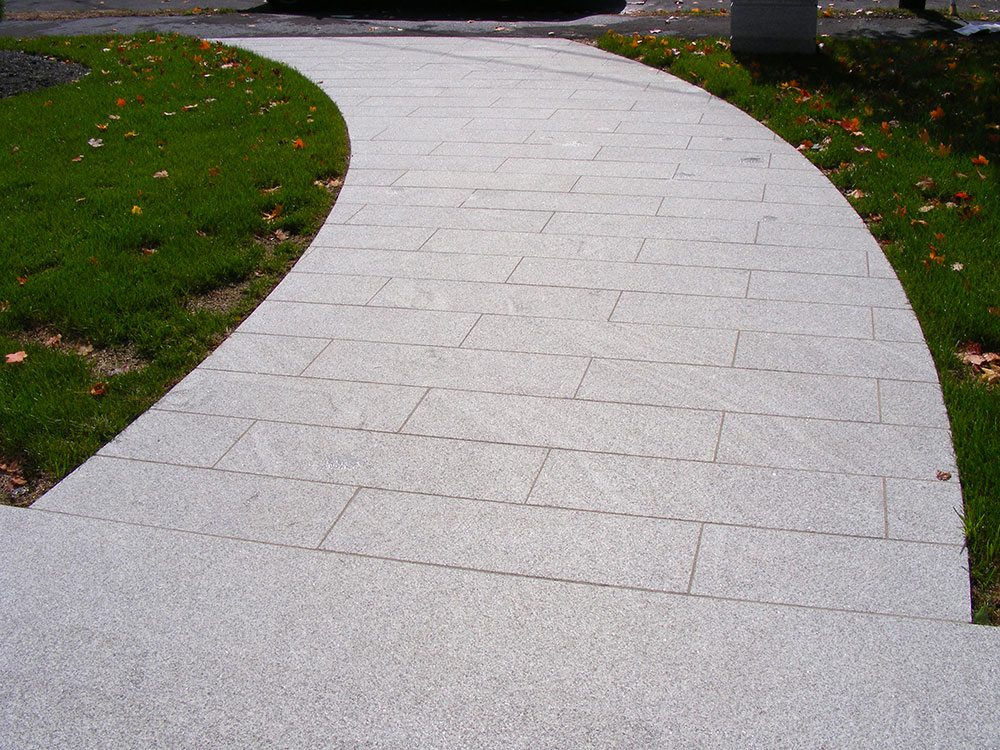
Woodbury Gray granite pavers offer striking texture and superior slip resistance and are available in many standard sizes, thicknesses and finishes.
The naturally occurring variations are based on where the stone is formed geographically, which can result in beautiful striations of different minerals. The result? A color range that can stretch from milky, quartz-like whites to pinky salmon shades all the way to rich black tones.
“The awesome thing about granite is that you can get just about any color you want — from your field colors all the way to banding, accents and inlays,” he says. “You can use the natural variations in color within the same stone type. With pre-cast you’re limited by the hue you’ve selected. It doesn’t have natural variations like natural stone. Highlighting different elements in the project with color helps pull your eye across the finished installation.”
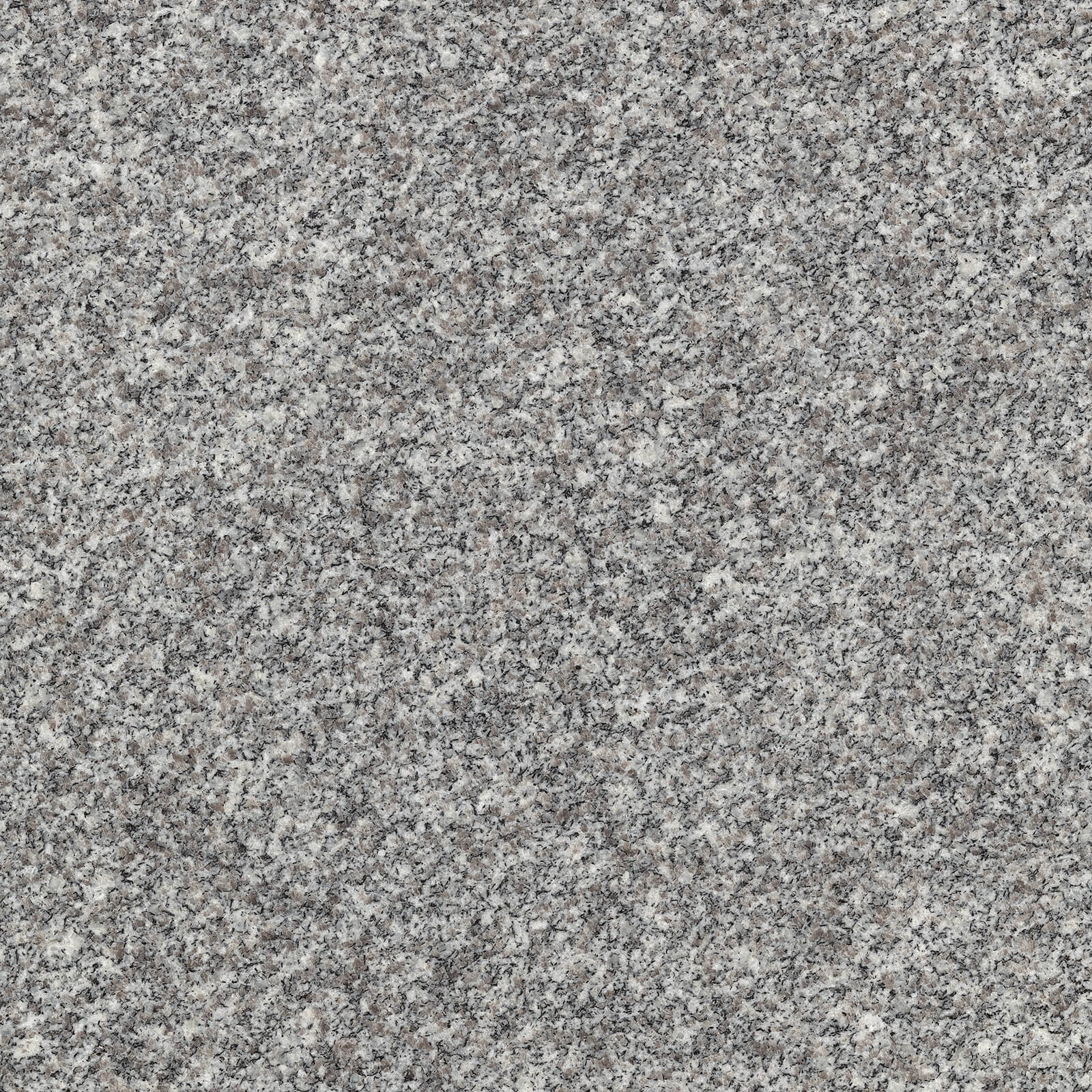
WOODBURY GRAY ™ Granite
QUARRIED IN WOODBURY, VT
WOODBURY GRAY ™ granite is a salt and pepper, light gray granite, with a medium tight grain and a consistent color. The stone is known for its durability in all weather conditions, slip resistance and classic appearance.
GET A SAMPLE
FREE TO THE TRADE
Pulling it all together: how to add natural stone to your hardscape design
Now that you know a little more about why natural stones are the perfect fit for landscape design, let’s see specifically how to incorporate them into a landscape project:
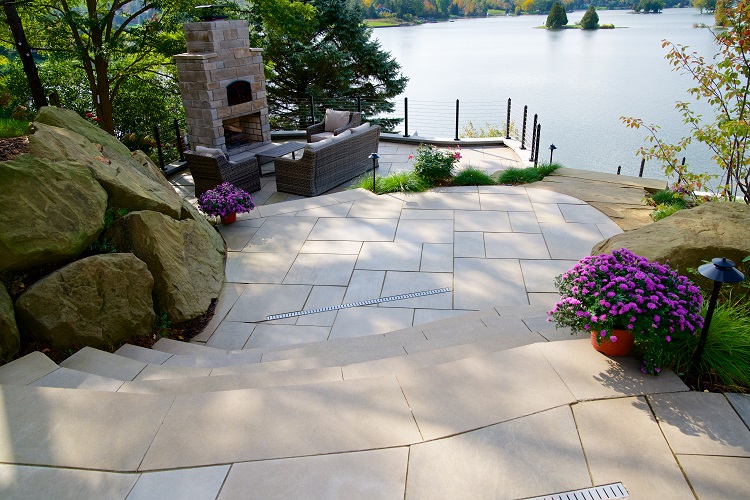
Indiana Limestone pavers and steps in Full Color Blend blend gently with natural surroundings and remain cooler underfoot than concrete or composite surfaces.
Steps, Treads & Walkways
Indian limestone gives an unimposing feeling on steps and treads — think the old world feel of New England townhomes that used the material to welcome guests with its muted tones and textures, Nate says. “It gives that elegant entryway where you want to focus on potentially other elements.”
Where Indiana limestone will work in basically any setting and conform to the design style, granite is going to give more of a rustic vibe. “Granite is the favored material in a more wooded or rustic setting,” he said.
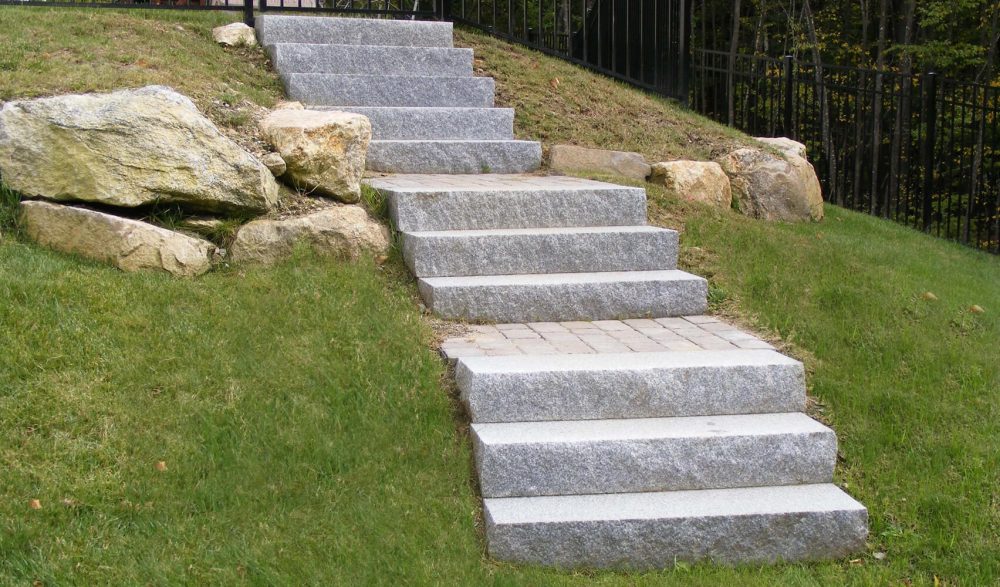
These rustic garden steps in Woodbury Gray™ granite are durable in all seasons and add a finished look to both natural and formal landscapes.
Walkway construction, which is typically made up of field pieces installed within an accent band that provides direction and movement, is a lot like steps and entryways. You can create visual interest with varying textures like, contrasting split face steps with smooth pavers.
Patios & Pool Decks
Indiana limestone has a number of advantages when used as your main patio material like its color palette — those gentle earth tones pretty much complement any style of house. But more importantly, Hardscape Nate said, the softer, warmer-toned limestone will be the perfect companion to almost any home’s exterior, whether it’s aluminum siding, brick or even industrial steel.
For pool decks, Indiana limestone is a family-friendly material. Its smooth surface provides an easy walking surface for young children and older adults. The lighter color tones have a low SRI (Solar Reflective Index) value, so it’s not really absorbing the heat and is friendly to barefooted guests. “It’s perfect for the back patio that doesn’t have a pergola and is taking on full sun and they’ve got kids who are going to be running around without their shoes on,” Nate says.
The beauty of granite is that it’s going to give you those color options and tend to be tighter and heavier in feel, he says, “which makes it the perfect material for a more grand, expansive area. We’re not talking 400 square feet but 1,500 to 2,000.”
Granite is also the right choice to use for a patio if the homeowner likes to entertain. “Its really tight grain, texture, and density won’t absorb a spilled glass of wine nearly as easily as other materials.” And it looks luxurious when used for pool coping.
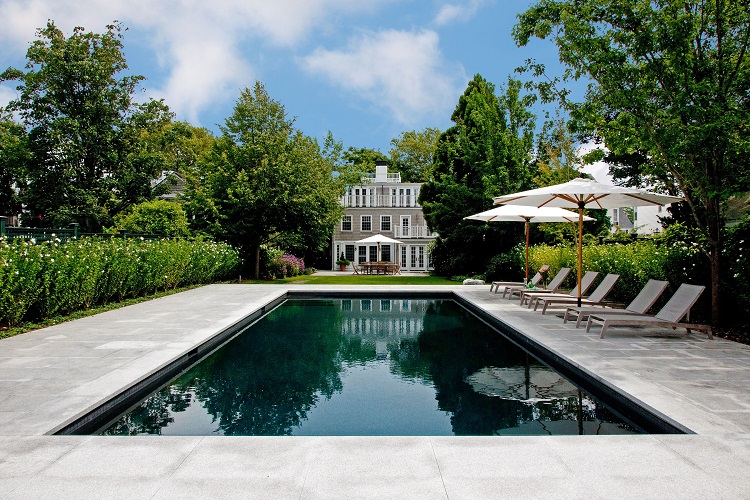
The classic tones of Woodbury Gray™ granite pavers support the elegant design of this New England poolscape. Homeowners appreciate that they will last generations.
Nate says, granite’s best features are its versatility and durability. “I see granite being used in the driveway application to give that high end, luxury feel. From ski cabin in the mountains to high end modern downtown Chicago home.”
Even though granite can be a workhorse of a stone — lending a durability to projects to help them stand up to heavy traffic and resist staining — it’s also a timeless material, he said. “I mean, it is Roman after all.”
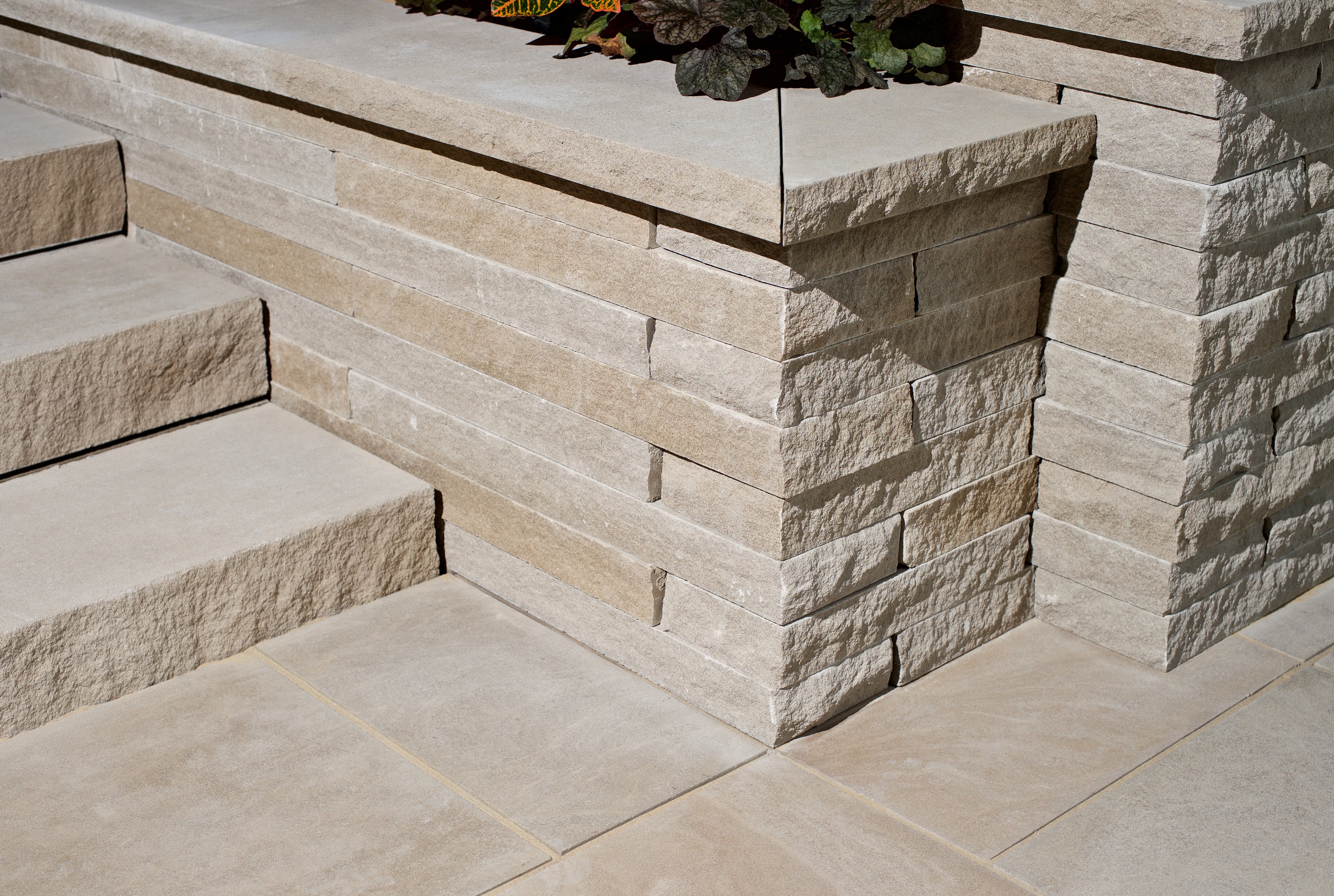
Snap-to-size Indiana Limestone – Full Color Blend ™ wall caps enable contractors to easily create polished projects with less work than bluestone and better results than concrete.
Walls, Caps, Coping & Edging
One of the advantages of using Indiana limestone for landscape walls, caps, coping and edging is its ability to be easily manipulated on site. “You can easily make these pieces any length you want,” he says, explaining how limestone can be snapped to size and quickly touched up using a rock hammer to restore a nice, chiseled face. The ability to do smooth faced or snap faced wall units and blend them would also give the project’s look “great variety and texture,” he adds.
Because of the tone and texture of Indiana limestone, it’s gives a warm and inviting feel when used to create seat walls, pillars, small planters inside the space. “For further interest you might want to accent it with another material because of its tone,” Nate said.
Hardscape Nate really sees this as the ideal opportunity to mix natural stone materials to really bring a “wow factor” to a patio area using granite, and then softening the look with Indiana limestone. He gives as an example using Indiana limestone paving with a WOODBURY GRAY ™ granite wall to really define the edges of a larger space, then installing the limestone as coping to cap the wall. “That’s going to bring that soft edge to the top and finish off the look by bringing the tone color back and even out the heaviness of the wall,” he says.
With granite, the mass of the stone allows you to build larger gravity walls and seat walls. When it comes to caps, coping and edging, the color tones of granite and the texture that can be achieved when its snapped lend itself to those more accent areas of a patio project. “That’s going to define those structural edges along a walkway or patio that really defines your space and ties other elements, like pillars, together,” he says.
There are endless ways to incorporate natural stone into your landscape vision, which not only bring textural and color beauty to the project, but help make your work stand out from the competition.
Whether you’re looking for just the right material for a full walkway or patio or to add the finishing touches on an entryway, your natural stone choices are a veritable buffet of design choices to choose from. And really, who wouldn’t pick bacon over cold cereal?
